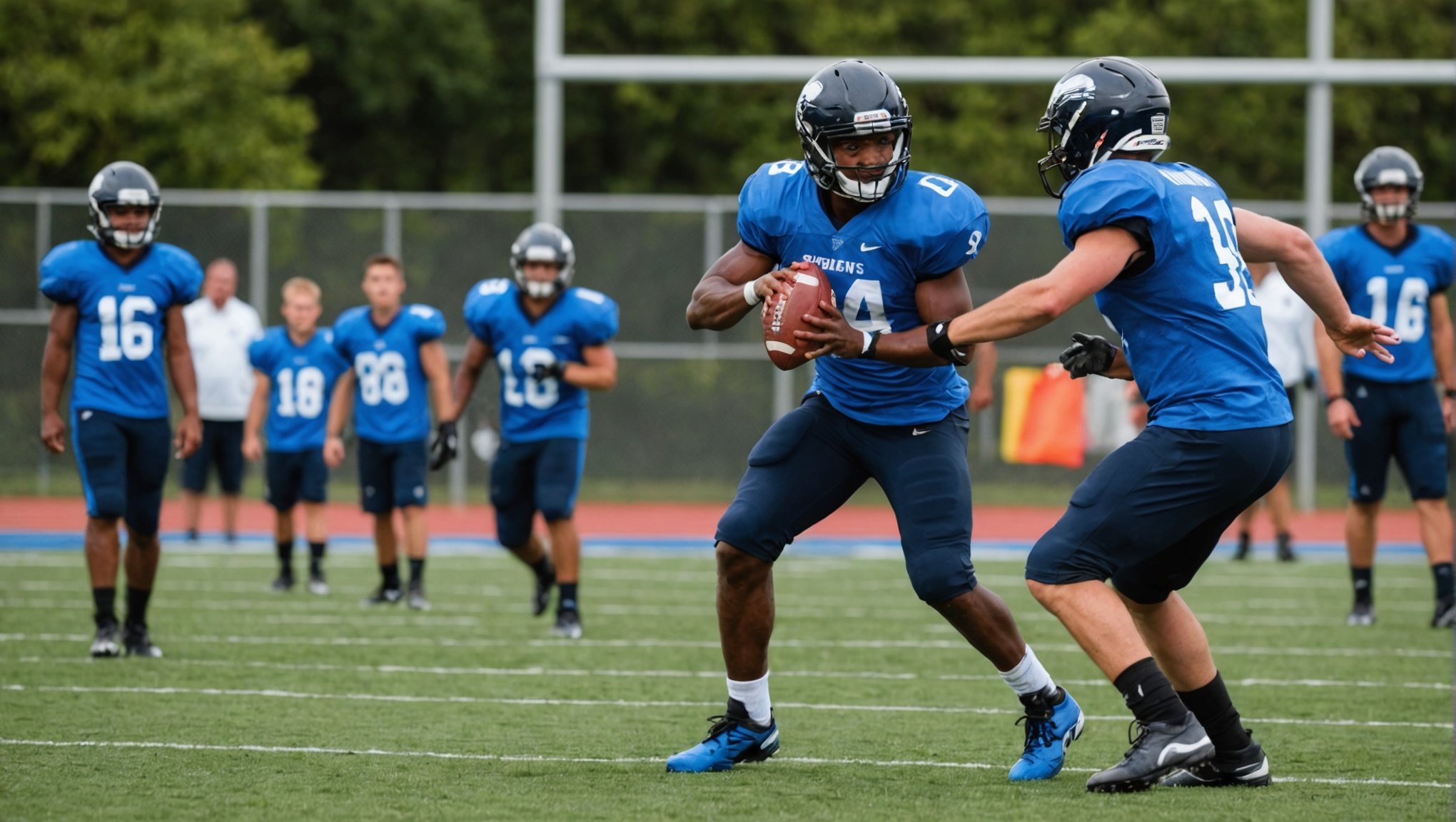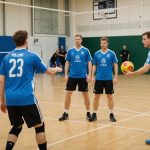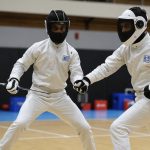Left-handed football players often face unique challenges on the pitch, including limited training resources tailored to their distinctive needs. This oversight can stifle their potential and prevent them from reaching their full capabilities. By embracing equal training opportunities designed for lefties, clubs can cultivate talent and create a more inclusive environment. Discover how targeted strategies can unlock the talent of these often-underrepresented athletes and enhance the overall dynamics of the game.
Understanding the Unique Challenges of Left-Handed Football Players
Left-handed athletes, particularly in football, often encounter distinct challenges that can impact their performance and training. Left-handed football training requires tailored approaches to address these issues effectively.
One common misconception is that left-handed players have an inherent advantage due to their rarity, potentially catching opponents off guard. However, in reality, the challenges for left-handed athletes are multifaceted. They often need to adapt to equipment and systems primarily designed for right-handed players, which can hinder their natural play style.
During training, left-handed players may face difficulties with drills that are predominantly structured for right-handed dominance. Coaches often need to modify these exercises to ensure left-handed players can perform optimally. For instance, positioning and tactical plays may require adjustments to accommodate their natural inclinations.
In gameplay, left-handed footballers might struggle with spatial orientation and positioning, as many team strategies are built around right-handed norms. This can lead to a steeper learning curve and necessitates creative problem-solving to integrate effectively into team dynamics. Recognising these challenges allows for more inclusive and effective training programmes, ultimately enabling left-handed athletes to thrive in football.
Benefits of Left-Handed Players in Football
Left-handed players bring unique playing style advantages to the football field. Their rarity can create a psychological edge in gameplay, often surprising opponents who are accustomed to right-handed norms. This unpredictability can be a strategic asset, allowing left-handed athletes to manoeuvre in ways that are less anticipated.
Historically, many successful left-handed football players have demonstrated these strategic benefits. Their ability to exploit angles and spaces differently often leads to innovative playmaking. For instance, left-handed players may excel in positions that require strong left-side control, like left-wing or left-back, providing a tactical advantage to the team.
Furthermore, left-handed players often develop a heightened adaptability, as they navigate a sport predominantly designed for right-handed individuals. This adaptability can enhance their problem-solving skills on the field, making them versatile assets in dynamic game situations.
In summary, while left-handed football players face distinct challenges, their advantages and ability to offer a fresh perspective on gameplay can significantly contribute to a team's success. Embracing these strengths allows teams to diversify their strategies and leverage the unique talents that left-handed players bring to the game.
Equitable Training Practices for Left-Handed Athletes
Creating inclusive training environments for left-handed athletes in football requires thoughtful adjustments and equitable coaching practices. Coaches must implement strategies that cater to the unique needs of left-handed players, ensuring they receive the same opportunities to excel as their right-handed counterparts.
Strategies for Inclusive Training
To foster an inclusive atmosphere, teams can incorporate exercises that are adaptable for both left and right-handed players. This might involve designing drills that allow for ambidextrous participation, thus recognising and utilising the strengths of left-handed athletes. By doing so, coaches can promote a more balanced and fair training environment.
Adjustments in Coaching Techniques
Equitable coaching practices necessitate adjustments in techniques to accommodate left-handed players. For instance, coaches can develop tactical plays that leverage the natural inclinations of left-handed athletes, enhancing their effectiveness on the field. Additionally, providing personalised feedback and support can help these players refine their skills and boost their confidence.
Importance of Tailored Training Programs
Tailored training programs are crucial for the development of left-handed footballers. These programs should focus on honing the specific abilities of left-handed players, allowing them to maximise their potential. By prioritising equitable coaching practices, teams can ensure that all athletes, regardless of their dominant hand, are positioned for success.
Coaching Techniques for Left-Handed Players
Coaching left-handed athletes requires specialized coaching methods to ensure they can perform at their best. One key aspect is adapting drills specifically for left-handed players. This involves modifying existing exercises to accommodate their unique play style, ensuring they can practice effectively without the constraints of right-handed norms. For instance, drills that focus on left-side control can help enhance their natural abilities.
Effective communication strategies are also vital in coaching left-handed athletes. Coaches should provide clear and tailored instructions, recognising the individual needs of left-handed players. This might include visual demonstrations or one-on-one feedback sessions to reinforce learning and build confidence.
Several successful coaching methodologies highlight the importance of inclusivity. For example, integrating ambidextrous drills allows both left and right-handed players to develop versatility, fostering a more inclusive training environment. Coaches can also employ targeted feedback, focusing on the strengths and weaknesses of left-handed athletes, to refine their skills further.
By implementing these specialized coaching methods, teams can create a supportive atmosphere that empowers left-handed players to excel. This approach not only enhances individual performance but also contributes to the overall success of the team.
Case Studies of Successful Training Programs
Exploring training programs for left-handed players reveals a wealth of success stories that highlight the effectiveness of inclusive approaches. These programs often tailor their methods to cater specifically to the unique needs of left-handed athletes, ensuring they can thrive in a sport dominated by right-handed norms.
Several renowned programs have emerged as leaders in this field, offering innovative solutions to common challenges faced by left-handed players. They focus on creating an equitable environment where left-handed athletes receive the same level of attention and resources as their right-handed counterparts. This involves not only adapting drills but also fostering an atmosphere of understanding and support.
Testimonials from both players and coaches provide insight into the transformative impact of these programs. Left-handed athletes often express increased confidence and improved performance, attributing their success to the tailored training they receive. Coaches, too, note the enhanced team dynamics and the strategic advantages gained by integrating left-handed players effectively.
Measurable outcomes from these inclusive training approaches underscore their value. Teams report higher win rates and more cohesive gameplay, demonstrating the tangible benefits of investing in specialized training programs for left-handed players. These success stories serve as a testament to the power of inclusivity in sports training.
Encouraging Inclusivity in Sports Training
Embracing inclusivity in sports is crucial for creating a supportive and effective training environment. Coaches and trainers play a pivotal role in promoting diversity in training, ensuring that all athletes, including left-handed players, feel valued and understood.
The benefits of diversity in training environments are manifold. A diverse team fosters creative problem-solving and strategic innovation, as players bring different perspectives and skills to the table. This diversity can lead to more dynamic gameplay and improved team performance.
To advocate for left-handed players' needs, coaches should implement strategies that address their unique challenges. This includes designing drills that accommodate left-handed techniques and ensuring equal access to resources. By actively promoting inclusivity, coaches can help left-handed athletes develop their full potential.
Moreover, inclusive training programs boost team morale and cohesion, as every player feels their contributions are recognised. This sense of belonging can enhance overall team dynamics, leading to more harmonious and successful outcomes on the field. By prioritising inclusivity, sports teams can not only improve individual performance but also strengthen their collective capabilities.
Resources and Support for Left-Handed Football Players
Navigating the world of football as a left-handed player can be challenging, but numerous resources for left-handed athletes offer valuable support. Various organisations and networks are dedicated to assisting left-handed players, helping them overcome challenges and excel in their sport. These groups provide a platform for sharing experiences, advice, and strategies tailored to the unique needs of left-handed athletes.
Organisations and Networks
Several organisations focus on supporting left-handed players by offering specialised resources. These networks often host workshops and seminars to educate both players and coaches on effective techniques for left-handed athletes. By connecting with these communities, players can gain insights and build a support system that fosters growth and development.
Recommended Training Tools
To enhance performance, specific training tools and equipment are recommended for left-handed athletes. These include ambidextrous training aids that cater to both left and right-handed players, ensuring equitable practice opportunities. Such tools can help left-handed players refine their skills and adapt to various game scenarios.
Educational Resources
Educational resources for coaches and trainers are crucial in supporting left-handed players. These materials offer guidance on developing inclusive training programs and adapting strategies to suit left-handed athletes. By utilising these resources, coaches can better understand and address the unique challenges faced by left-handed football players.













